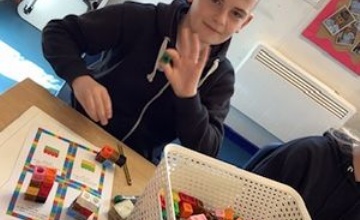Weekly News 25.04.25

Key Dates
1st May – Year 5 Come dine with me picnic at 12.10pm
2nd May – Year 6 Come dine with me picnic at 12.10pm
5th May – Bank Holiday
6th May to 15th May – Year 6 invited into school for breakfast from 8am
English
This week, the children continued their reading of ‘Kensuke’s Kingdom’. They used the content to write a flashback from Michael’s perspective. Key language features were selecting tenses for the correct purpose, using a range of sentence openers and making links between paragraphs. In the latter part of the week, the children focused on the character of Kensuke and wrote a character description of him. Next week the children will focus on writing in role as Kensuke.
Maths
In maths this week, the children learnt about ratio. At the beginning of the week, they looked at solving problems using ratio relationships and understanding the structure of ratios. At the end of the week, the children worked on scale factors. Shapes, map scales and recipes were some of the contexts the children used to work out different scale factors and how to increase or decrease an amount.


Home learning task:
-
Below is a reading comprehension. Please answer the questions based on the text. Remember point, evidence and explain.
-
Learn the following words as part of your spelling learning: vicious, precious, conscious, malicious, ambitious, cautious, fictitious, nutritious, delicious, infectious.
Reading Comprehension
Comets are fascinating celestial objects that capture the imagination of many. Often described as "dirty snowballs," they are made up of ice, dust, and gas. When a comet approaches the Sun, the heat causes its icy core, known as the nucleus, to heat up and release gas and dust, forming a glowing cloud called a coma. This process can create a spectacular tail that can stretch across millions of kilometres. The tail always points away from the Sun due to the solar wind, a stream of charged particles emitted by the Sun.
Comets originate from two main regions in our solar system: the Kuiper Belt and the Oort Cloud. The Kuiper Belt is located just beyond the orbit of Neptune, while the Oort Cloud is a theorised spherical shell surrounding the solar system. Comets that come from the Kuiper Belt tend to have shorter orbits, taking only a few years to complete a journey around the Sun. In contrast, long-period comets from the Oort Cloud may take thousands of years to return.
Throughout history, comets have been viewed with awe and sometimes fear. Ancient cultures often saw them as omens, predicting significant events. Today, scientists study comets to learn more about the early solar system, as they are considered time capsules, preserving primordial materials from its formation. Observing comets not only helps us understand our celestial neighbourhood but also ignites curiosity about the universe beyond.
Questions
-
What are comets often described as?
-
What two main regions do comets originate from in our solar system?
-
What happens to a comet when it approaches the Sun?
-
Why might ancient cultures have viewed comets as omens?
-
How does the author convey the idea that comets inspire curiosity about the universe?
-
What can be inferred about the relationship between comets and the study of the early solar system?
-
Based on the text, what might scientists hope to discover by studying comets?
-
If more comets are discovered from the Oort Cloud, what predictions can be made about their orbits?
-
How might our understanding of comets change in the future, considering advances in technology?




